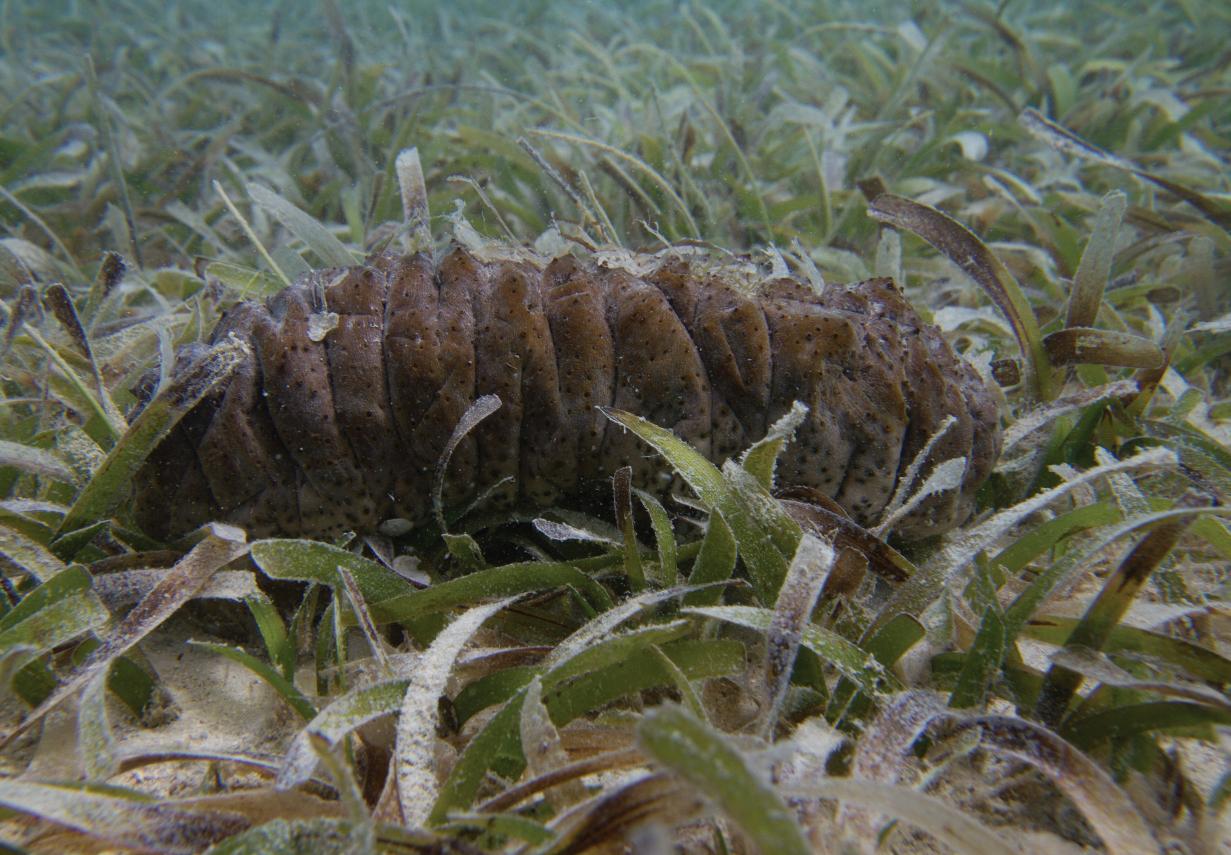1 minute read
Turtle grass Turtle grass (Thalassia
testudinum Thalassia testudinum)

Turtle grass is the dominant seagrass species in the Caribbean. Its common name derives from its importance as the main food source for green turtles (Chelonia mydas) as well as fish and other herbivorous organisms. Turtle grass lives in high salinity environments, usually protected from high surf condi ons. It can generally be found from the low de line to around 10 m (33 feet) in depth, but in clear waters, it may survive at depths of up to 30 m (98 feet). This species can tolerate exposure to direct sunlight during low de.


Turtle grass possesses flat, ribbon-like leaves about 0.4 to1.8 cm (0.16 to 0.71 inch) wide, and up to 30 cm (12 inches) long. The leaves have rounded ps and emerge in bunches from short stems. The flowers are large and may vary in color, from light greenish white to pale pink. They produce pods containing mul ple seeds which o en reach land. This seagrass features a strong anchoring system that includes roots and rhizomes (or horizontal stalks) that penetrate deeply into the substrate (up to 25 cm, or approx. 10 inches) (Figure 9).


Organisms that live in and feed on turtle grass





Seagrass meadows: Teacher’s Guide 17


